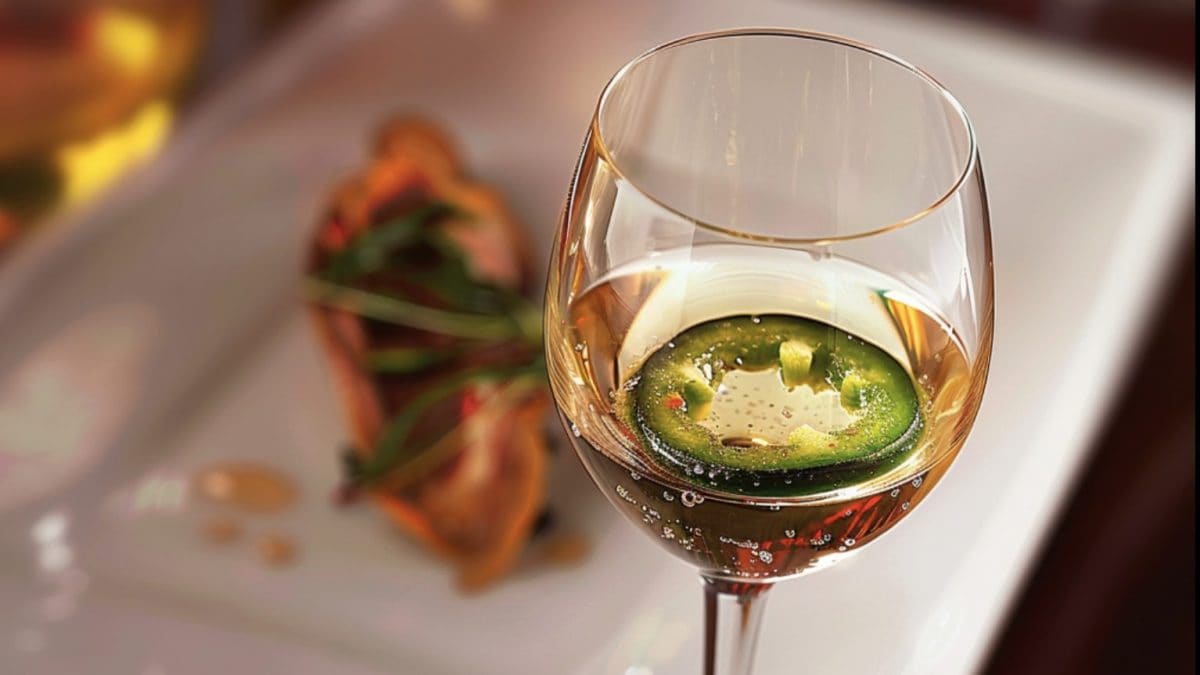
It has always been said that trends come and go, but in the world of social media this dynamic has taken on an impressive speed: the moment you discover a trend, there is already another one around the corner. We haven't even had time to talk about angel hair chocolate before a new bizarre culinary trend is popping up: it's called "Sauvy b" and involves inserting hot peppers into white wine. A recipe that on the one hand has won the hearts of many, wine lovers and non-wine lovers alike, but on the other has given rise to some controversy among some experts.
A Very Simple Recipe
The steps are simple: take a bottle of white wine, Sauvignon Blanc to be precise, cut a few slices of frozen jalapeño, pour them inside and… cheers. Now, the first question comes quite spontaneously: why? The most accredited answer is that the spiciness of the chili pepper enhances some of the aromas of this wine: crazy? Not entirely. In fact, Sauvignon Blanc is a wine that contains aromatic compounds called pyrazines: these are present in some foods such as peppers and are also found in some grapes, such as the one used to produce this wine.
Following a logic, then, we can say that the idea of using this ingredient to enhance some of the aromas of this wine may have its reasons. In reality, however, as stated by Roy Isle of Food & Wine, the pyranzines present in the jalapeño are not released so quickly: "I would be very surprised if the pyrazines present in green peppers or jalapeños diffused into the wine within two minutes of adding them. It seems very unlikely. The aromatic aspects… well, if you cut a pepper, you can taste them". So, rather than to the mouth, this light spicy note could reach your nose, still modifying, even if very slightly, the overall flavor of the wine. A well-known American sommelier also tried it and stated that not all Sauvignon Blancs are perfect for this recipe: the best are the New Zealand ones "because they are fruitier and balance the spiciness of the jalapeño".
Will This Really Be The Drink of The Summer?
Opinions on this type of cocktail are not, as usual, all the same. On Tik Tok, the trend has certainly become very popular and there are many positive comments from people who have tried it, some saying that "from now on I will drink every glass of Sauvy b with frozen jalapenos" or those who believe that "it will be the drink of the summer because it is simple to prepare". And the enthusiasm is also seen in the data: according to what was reported by the British weekly The week, "searches for "Sauvignon Blanc" and "chilli peppers" on the Waitrose website (a well-known English supermarket chain, ed.), for example, have increased by 119% and 206% respectively on an annual basis.
So here, for the umpteenth time, the eternal question arises: should foods be tasted as they are or, as in this case, are some small variations allowed? As reported by Repubblica, Niklas Foradori Hofstätter, of the eponymous company that produces Sauvignon in our country, states: “Wine must not be complicated, but not even violated. If you introduce an external element, you lose its organoleptic properties. I often see my peers add soda or ice: for them it is pleasant, but as a producer I would like the wine to be tasted as it is”.
But there are also those who opt for a softer position, whose motto is "if you like it, it's fine". This is the philosophy of Roy Isle who, again at Food & Wine, says: "Does it make it better (wine)? No. Does it make it different? Sure. Maybe you'll like it better… Let's put it this way. It's like if you put frozen cherries in a wine that has a slight hint of cherry. Will the wine be better? No. But what the hell, maybe you're someone who likes having frozen cherries in wine".
;Resize,width=767;)
